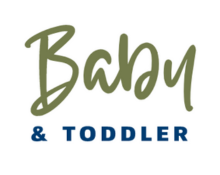
Introducing solids to a breastfed baby is an exciting milestone in their development. Here are some tips to consider when introducing solids while continuing to breastfeed:
Timing: The World Health Organization (WHO) recommends exclusive breastfeeding for the first six months of a baby’s life. After six months, you can gradually introduce solid foods while continuing to breastfeed. However, every baby is different, so it’s important to watch for signs of readiness, such as good head control, ability to sit up with support, showing interest in food, and loss of the tongue-thrust reflex.
Continue breastfeeding: Breast milk should remain the primary source of nutrition for your baby throughout the first year and beyond. Even as you introduce solids, continue to breastfeed on demand or according to your baby’s cues. Breast milk provides essential nutrients and antibodies that support their growth and immune system.
Start with simple and nutritious foods: Begin with single-ingredient, easy-to-digest foods, such as pureed fruits and vegetables, iron-fortified baby cereals, or mashed soft foods. Introduce one new food at a time, waiting a few days before introducing another to watch for any allergic reactions or digestive issues.
Offer breast milk before solids: Before offering solids, breastfeed your baby to ensure they receive the necessary nutrition from breast milk. This helps maintain your milk supply and ensures they are not too hungry, which can lead to frustration during feeding.
Gradual transition: Start with small amounts of solids, usually in the form of a few teaspoons or tablespoons, once a day. As your baby gets used to eating solids, gradually increase the frequency and quantity of solid food while continuing to breastfeed on demand.
Follow your baby’s cues: Let your baby guide the process of introducing solids. Watch for signs of hunger, fullness, and interest in food. Some babies may take longer to accept solids, while others may show enthusiasm right from the start. Respect your baby’s preferences and pace.
Maintain a variety and balance: Introduce a wide variety of foods, including fruits, vegetables, grains, and proteins, to expose your baby to different tastes and textures. As they grow, aim for a balanced diet that includes a mix of breast milk, solids, and, eventually, other dairy products and finger foods.
Remember that breastfeeding can continue alongside the introduction of solids, providing comfort, nutrition, and immune protection to your baby. Every baby is unique, so consult with your pediatrician or a registered dietitian for personalized advice and guidance on introducing solids while breastfeeding based on your baby’s specific needs and developmental stage.
